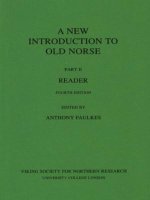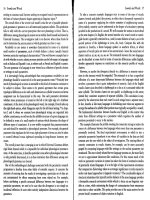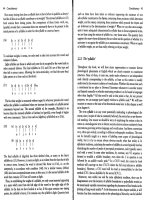Slide Sound structure Part II: Phonology
Bạn đang xem bản rút gọn của tài liệu. Xem và tải ngay bản đầy đủ của tài liệu tại đây (324.56 KB, 36 trang )
Sound Structure
Part II: Phonology
2009
Review of Phonetics
• Speech sounds are decomposable into articulatory
primitives (also known as features)
• Consonants and Vowels
• Feature differences (e.g., voiced vs. voiceless, nasal vs.
not nasal, labial vs. alveolar vs. velar) lead to the diversity
of sounds across languages
• We seem to perceive speech sounds as discrete units rather
than continuous acoustic signals
Seeing Speech
Further aspects of sound:
Cognitive
• How important is speech to language?
• The phoneme: the basic, distinctive sounds of
a language
– What it means to be distinctive
• How words are organized into subparts
(syllables and other units) for the
determination of stress
• Knowledge of language--the internal
“grammar” in your mind--will get more and
more abstract than the physiological aspects
of language
Cross-Linguistic Differences
• Everyone has encountered a language that
contains a speech sound that is not in their
native language
• As a general point, languages differ greatly
both in terms of how many phonemes they
have and in terms of which phonemes they
have
– Number of phonemes:
• Many: Some Khoisan languages,
around 140 phonemes
• Few: E.g. Hawaiian, 13 phonemes
Being Distinctive
• We refer to the phonemes above as distinctive
because they make contrasts between
different words
• This can be illustrated for stops by using
minimal pairs: a pair of words that differ in
only one phoneme:
pill
bill
till
kill
[p] vs. [b]
dill
gill
[t] vs. [d]
[k] vs. [g]
Lost in Translation
R vs. L
• Many Korean and Japanese speakers have trouble learning
the contrast between R and L in English
• It is NOT because these sounds are absent in the native
language
– Seoul vs. Korea
– Notice that they are NOT in contrastive positions (l at the
end of a syllable but r at the front)
– But English uses R and L contrastively: minimal pairs
– bLue~bRew, Light~Right, maLt~maRt
– Phonology is not just about the sound inventory, it’s also
about how sounds are put in use
Differences that are not
distinctive
• Some aspects of pronunciation are not
distinctive.
– Example: aspiration (puffing air)
pit vs. spit
– The former [p] is aspirated, but the [p] in the latter is
not
– But: the distinction between aspirated and nonaspirated [p] is not distinctive in English (although it
is in other languages). That is, in English there are
no pairs like
[phIt] ‘hole in the ground, etc.’
[pIt] (whatever this might be)
Rule of thumb: come up with minimal pairs
as a test for phonemes
Transcribing differences
• When we transcribe speech sounds using the
IPA notation, we may do so in different ways.
– If we are interested in every phonetic detail,
we would indicate effects like aspiration in
English, even if it is not distinctive ([phIt])
– If we are interested more in the
phonological inventory, we would omit the
aspiration, as it is not distinctive ([pIt])
• For our purposes we will be concentrating on
the latter type
• Sometimes when we focus on phonology, an
abstract representation, we use slashes,
e.g. /p/
Phonemes and Allophones
• Sometimes the same phoneme is pronounced
in different ways depending on its context
• The variants of a phoneme are called
allophones of that phoneme
• When we are talking about such distinctions,
the phoneme is in slashes /…/ and the
allophones are in square brackets […]
• The aspiration of e.g. /p/ is a case of this type;
we say that /p/ in English has the allophones
[p] and [ph]
Phonemes and Allophones,
cont.
• So, for instance, the phoneme /p/ appears in
each of the following words:
pit
spit
• How, the first contains the allophone [p h],
while the second contains [p]
• In fact, the rule for aspiration in English is
more general & complex:
1. English voiceless stops (e.g., p, k, etc.) are
a. Aspirated if word initial, or syllable-initial
preceding a stressed vowel:
Compare récord vs. recórd
b. Otherwise unaspirated.
Phonemes: Nasalized vowels
• e.g. English speakers have not memorized any nasal vowels
• but English speakers do make nasal vowels:
vs man [mǣn]
mat [mӕt]
• We have one phoneme that can be realized phonetically as
nasal or oral
• One phoneme /ӕ/ with two allophones [ӕ] and [ǣ]
Implications for learning words
• When we learn words, we don’t memorize their
pronunciations directly
• We memorize the abstract phoneme representations
(e.g., /pit/ and /spit/)
• The aspiration rule will turn /p/ in the former to an
aspirated [ph]
• This saves a tremendous amount of memory
but involves online computation
Phonemes and Allophones
allophone
allophone
Finding Phonemes: More in
recitation
• The phonemes differ from language to language.
• How do we figure out what the phonemes of a language
are?
• One trick is to look for minimal pairs (pӕt bӕt)
Finding Phonemes
• Minimal pairs are two words that have different
meanings, but differ in only one sound sip/zip,
day/bay, ram/ran/rang
• Since the difference between the sounds is meaningful, it
must be stored in memory.
• Our minimal pairs above let us conclude that:
– s/z are distinct phonemes,
– d/b are distinct phonemes,
– m/n/ŋ are distinct phonemes
Finding Phonemes
• Sometimes it isn’t possible to find minimal pairs for all
sounds, but speakers can tell whether a contrast would
yield a distinct possible word, even if it’s not a real
word.
• e.g. “bat” vs “bap”: I know that “bat” is a word and
that “bap” isn’t, and that “bap” is a possible word.
So /t/ /p/ are distinct phonemes.
Finding Phonemes
• Same procedure with vowels
• e.g. beat/bit/bait/bet/bat/but/boot/boat/bought
• When working on phonological problems, first look
for minimal pairs. Yes = phonemes
Rules of Pronunciation
• [vowel] ➔ [nasal] / __ [nasal consonant]
• the kind of sound that changes
• in this rule, it’s vowels
• Note: man but not mat
• Note: man and can and tan and san(k)
Rules of Pronunciation
• [vowel]
➔
• “becomes”
[nasal] / __ [nasal consonant]
Rules of Pronunciation
• [vowel] ➔ [nasal] / __ [nasal consonant]
• the change
• here, nasal
• Notice: I didn’t put [nasal vowel]--I don’t have to put
vowel b/c that doesn’t change
• Only put what changes = simpler, less to remember
Rules of Pronunciation
• [vowel] ➔ [nasal]
• “when”
/
__ [nasal consonant]
Rules of Pronunciation
• [vowel] ➔ [nasal] / __ [nasal consonant]
• This is the environment that causes the change
• The underlining shows the position of the sound that’s
changing
• Here: before a nasal consonant
Rules of Pronunciation
• To show “after a nasal consonant”, we could have done
this:
• [nasal consonant] ___
• To show “between a nasal consonant and a nasal
consonant”, we would have done this:
• [nasal consonant] ___ [nasal consonant]









